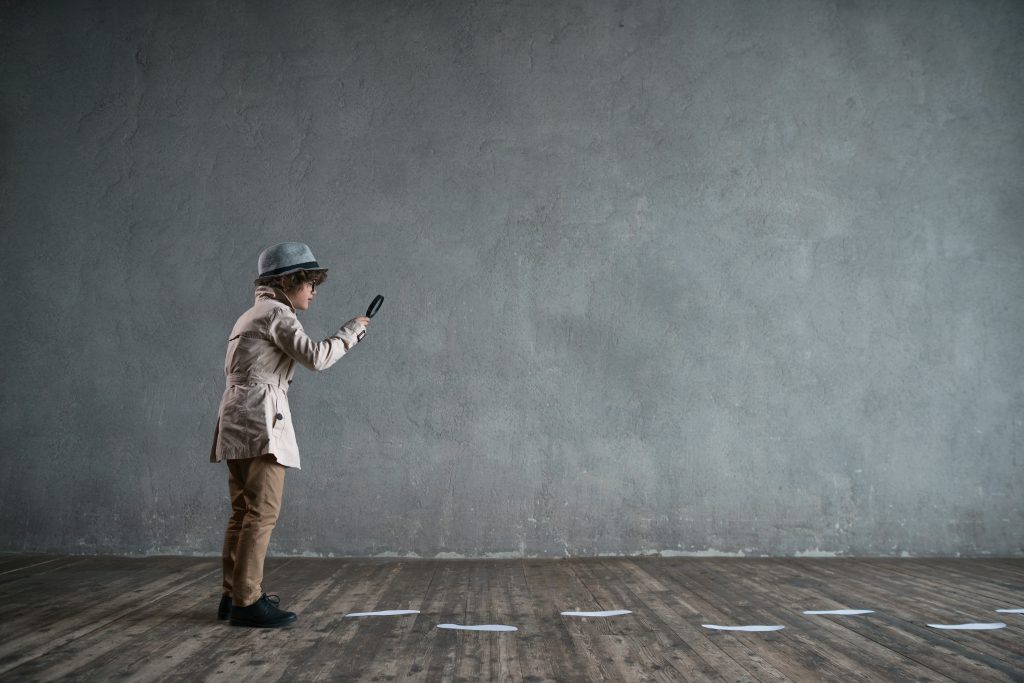When my husband and I moved into a condo in 2011, we loved the property grounds, which stood near the edge of a mountain. Though we took a few strolls here and there, we never really observed the area in which we lived.
It wasn’t until my son was walking—and we were in a pandemic-induced quarantine—that I really noticed the oasis around us. Our 10-minute walks turned into 40-minute strolls, which turned into 60-minute discovery adventures.
This is all due to Shawn, “The Creative Kid,” who took an extraordinarily amount of time peering at one flower or investigating the rings on a tree trunk. He would be mesmerized by the choreography of butterflies taking flight or be perfectly content to wait patiently as a snail crossed the sidewalk. I’m serious.
We waited 10 minutes for a snail. He was in awe. Shawn took the time to observe the creatures, to feel the textures, and to listen to the melodies of nature all around him. He. Took. The. Time.
Because of his toddler leadership, I could better observe the creativity all around me. I could see the variety of plant and insect life surrounding my humble abode, which I was blinded to before.
I could hear over five different bird calls during that day and differentiate the symphony of different sounds and colors during the sunrise and sunset. My son forced me to re-engage my innate observational skills, and I encourage you to do the same.
Go outside. Seriously. Get up and go outside. What do you see? Close your eyes. Which sounds do you hear? Are they in pattern form? What is the texture of the plants in your area? Are some glossy, furry, spiky? What does it smell like? How does the aroma add to the personality of the plant? What words do you use to describe the plants?
Search for other environmental elements you can engage with. Take your time. Maybe take a moment to stop and sit with a roly-poly bug. Observe how the sections scrunch together to help it move. Give it a name. A goofy name!
We are pretty familiar with the saying hidden in plain sight. Sometimes we become so accustomed to something that it no longer catches our attention. An example of something else we often overlook is Velcro. That’s right. Velcro. Don’t you love Velcro? I do. It’s the best thing since sliced bread, especially when Shawn was a toddler and couldn’t tie his own shoes yet.
Well, being in nature is what inspired this innovation for my son’s shoes. George de Mestral, a Swiss electrical-engineer, invented his first touch-fastener in 1941 when he went for a walk in the woods.
Being observant, de Mestral wondered why burdock seeds clung to his coat and his dog. He paid attention to a natural process that was happening right under his nose. He walked by what would become his million-dollar idea daily until he stopped to fully observe and question this natural occurrence.
Once he understood the mechanics of how the burdock seeds clung to fibrous materials like his jacket and dog, he was able to reproduce this effect for commercial uses. What are you walking past daily that could be the next big idea?
Velcro is one of the most famous examples of biomimicry, which is the process of creating and designing products or services inspired by natural systems or things found in nature. How would nature help us with computer programming?
Dr. Philip Emeagwali, an African inventor, studied the activity of bees within a honeycomb and determined that computers could follow the same process. Other examples of biomimicry include the invention of climbing suction cups capable of supporting human weight, which mimic the biomechanics of gecko feet. Isn’t it amazing? But it doesn’t stop there.
Here’s one last example. Did you know the aerodynamics of the famous Japanese bullet-train was inspired by the shape of a bird’s beak? Feeling the effects of nature in a Japanese shinkansen was a memorable experience for my husband and me.
I’m in awe of the partnership between humans and the environment. Nature is the finest place to explore creativity and unified diversity. It screams unified collaboration! You don’t have to travel around the world to experience this. Just travel around your world.
Genein Letford, M.Ed





